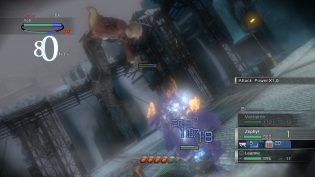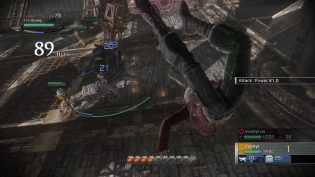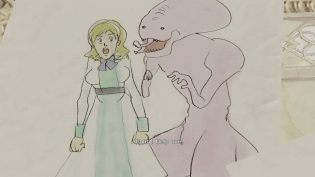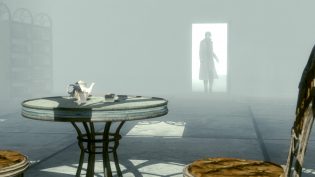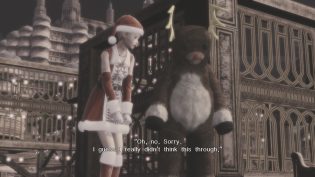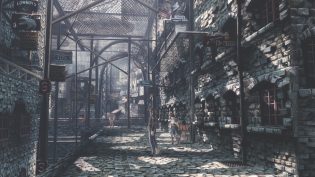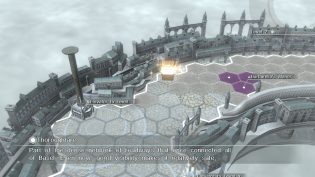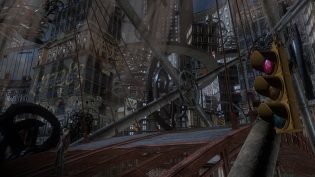Many years ago I had a chance to check out a few hours of Resonance of Fate (also known as End of Eternity) on my friend’s PS3. I didn’t get too far but told myself that I must return to that game someday, simply due to how amazing the combat system in it was. Well, now I have. It wasn’t as pleasant of an experience as I’ve hoped for.
This is a jRPG from tri-Ace, who are possibly best known for Star Ocean and Valkyrie Profile series. And, just like with the aforementioned well-known series, Resonance of Fate is full of very unorthodox ideas and mechanics, despite also having a lot of traditional jRPG concepts as well. Unlike what I know about those series, this title pretty much hangs solely on these ideas. Let me explain.
The biggest draw of this title has always been the combat system that is incredibly simple, yet engaging, challenging to master and full of interesting nuances. While you do get battle stages and somewhat turn-based/active time battle premise, how combat plays out on practice is very different. And all due to 2 basic defining features. The first one is the division of damage into Scratch Damage (Blue) and Direct Damage (Red). Scratch damage (dealt by submachine guns and some status effects) can accumulate pretty quickly, both on enemies and your team, however, it cannot kill and regenerates over time (and can be healed). Direct damage (dealt by handguns, explosives and few other types of damage) is slow, works badly against armor and is typically low in output. However, if there was any scratch damage accumulated, direct damage adds to it and deals the full amount of scratch+direct damage. This means, that you’re usually planning the order of your attack based on the idea of accumulating as much scratch damage as possible, especially against armored enemies, before crushing them with direct damage hits.
To help with that planning comes the concept of bezels in the “hero gauge”, which serves as the indicator of both armor against direct hits for the entire team, and the ability to perform “hero actions”. You see, instead of just spending your turn by moving a bit and then aiming and shooting, you can initiate a “hero run” – a heroic bloodshed/The Matrix inspired move where your character moves in the direction you set them to, while continuously aiming and being able to shoot, both on foot and in the air. All while enemies shooting at that character always miss. You can run from cover to cover like that or jump in the middle of lower level enemies, raining bullets from the sky, use the jump to extend the run or set up an even more special move where all three characters perform this “hero run” simultaneously. It’s really fun to learn and master and provides this game with a really unique feel for combat that is unlike anything you’ve ever seen in a turn-based title.
It is amazing. And also, going back to the explanation, the only thing that holds this game together. There is some semblance of a story, but it’s disjointed, muddy, essentially starts around the middle of the game if not later, doesn’t really tell anything of note and stars a cast of all boring if not obnoxious characters, including the playable team. None of them are likeable, none of them have any personality past a very basic, and badly explained, setup. None of the events are interesting even when you do understand what is even happening. And most of the world building is completely lost in this tedious tale, with hints of something interesting sporadically appearing, but never bearing any connection to whatever you can do, see or learn in the game itself.
Game looks drab, even with the updated higher resolution textures. And while I can appreciate a lot of work put into the “fashion” of the game (costumes aren’t armor here, they are actually just clothes to buy and look nice, that’s all), I don’t think there is anything memorable in the game in terms of the art style either. Music often goes for synth-driven prog-rock sound, but I found it to be extremely generic and boring as well. Even the curious concept of exploration, where you unlock hexes on the world map via items that drop from enemies and can find occasional treasure via these unlocks, after a while feels more of a bore than excitement. Weapon customization is such a cool concept here but gets clunky on practice and more of a chore. And everything is so incredibly painfully grindy…
It’s a game that’s worth checking out if you can be entertained purely by mechanics and don’t need anything else. It’s a great example of inventive mechanics that really need to be looked at and taken as inspiration by other games. But it’s also a game that a lot of people won’t stomach and get bored with really quick. That is, if they get to the point where they understand how the game even works, because the game isn’t particularly great about that. I’m glad this port exists, and that it’s really well made. I’m glad this game exists. I’m glad that I’ve finally completed it, 9 years later. And I will most likely never ever play it again.



